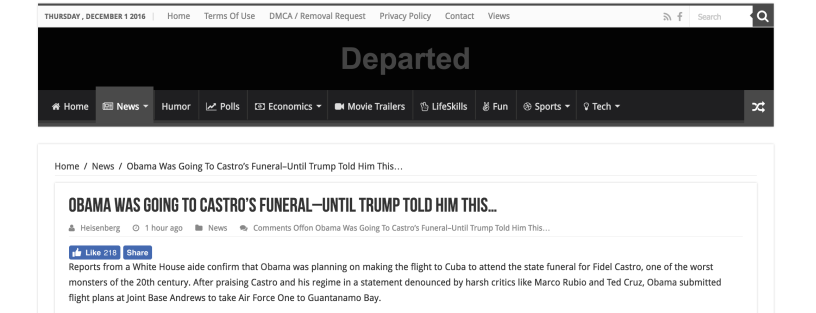A recent study by the Stanford Graduate School of Education revealed that many students ranging from middle school through college can’t distinguish between real news and sponsored content.
Although young people are fluent in social media, they are not savvy about what they find online, according to the report. It described young people’s ability to reason about information on the internet as “bleak.”
The study, titled Evaluating Information: The Cornerstone of Civic Online Reasoning, entailed exercises such as determining which tweets are the most trustworthy, evaluating whether to trust a photograph or not, and verifying a claim about a controversial topic.
More than 80 per cent of students believed native advertisements, identified with the words “sponsored content,” were the real news.
Matthew Johnson, director of education at Media Smarts, which has been studying young Canadians’ digital literacy for 15 years, said he was not enormously surprised when he saw the results of the study.
The research Media Smarts has done reflects similar results to the Stanford study, according to Johnson.
The Stanford study suggests the large amount of information at people’s fingertips can make individuals better informed or more ignorant, depending on their awareness of this problem.
Salma Mahgoub, a third-year Carleton journalism and human rights student, said she has fallen for fake or misleading news before.
She said during the Arab Spring, she followed Egyptian media closely for updates, and news organizations sometimes published news about government operations that ended up being false.
Mahgoub said students outside of journalism often read content that is funny and popular. She said the short text on video content such as the kind produced by Al Jazeera Media Network, also known as AJ+, can also be misleading, because information is often left out for the sake of length.
“What they’re reading [or viewing] is important, but it’s only the surface,” she said.
R.J. Pate, a local community organizer and activist, said they have also fallen for fake news.
Pate said they once picked up The Fulcrum, the English weekly paper at the University of Ottawa, not realizing it had a page dedicated to fake news, and believed it was real.
According to Pate, it’s easier to get duped on social media due to the fast-paced nature of it, and therefore most people read headlines or articles, and do not verify the information or do further research.
Facebook and Google are now taking steps to prevent sites that spread fake news from using their advertising platforms, according to The Wall Street Journal.
Media Smarts’ research has shown that some young Canadians in fact knew some verification tools, but did not necessarily use them, especially for news from social media, according to Johnston.
He said young people do not use these tools unless it’s within the context of school.
Johnson said people should always approach news with skepticism for two main reasons. The first is some news organizations are funded by large corporations and the interests of their funders might bias their content. The other is that news organizations also have political and social motivations, and people should be aware of these biases.
Johnson said other times, consumers of news themselves can have their own biases.
“They simply reject all news or find news that confirms what they already believe,” he said.
The researchers of the study say they now hope to work with teachers and curriculum developers, and also create videos to address this “threat to democracy.”
– Photo is a screenshot






